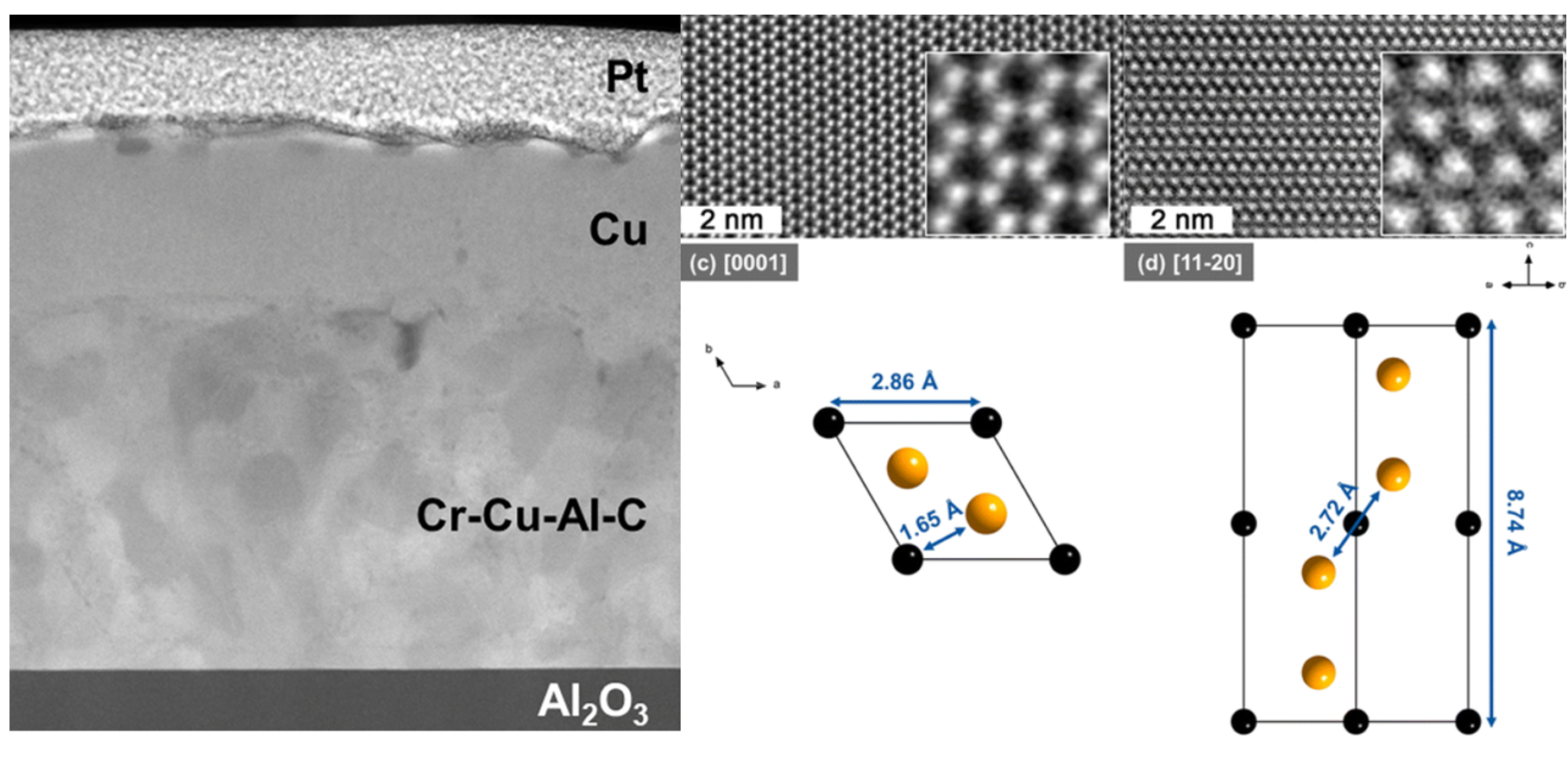
Formation of Cr2C phase by Al extraction from a Cr2AlC using chemical etching-free methodology
MAX phases are a family of ternary nanolaminated compounds that have garnered significant attention due to their unique properties, which bridge the gap between metals and ceramics. These materials are characterized by strong metallic-covalent M–X bonds and weaker M–A bonds. The relatively weak M–A bonds have enabled modifications through A-element substitution or removal, leading to the discoveries of new nanolaminated phases or their 2D derivatives, MXenes.
For Cr-based MAX phases, such as Cr₂AlC and Cr₂GaC, selectively etching to form Cr₂C has proven challenging. In this study, a novel approach was employed to achieve the formation of three-dimensional Cr₂C by extracting Al from a Cr₂AlC thin film using Cu as a getter material under vacuum annealing. This method, which does not involve chemical etching, was validated through a combination of microscopy and density functional theory calculations.
The microscopy analysis was conducted at the Linköping’s ARTEMI node via a user project led by Dr. Clio Azina from RWTH Aachen University, Germany. High-resolution microscopy analysis played a crucial role in revealing the atomic arrangements of the newly formed Cr₂C phases.
The findings of this study were recently published in Nanoscale (2025, DOI: 10.1039/D4NR03664F).
